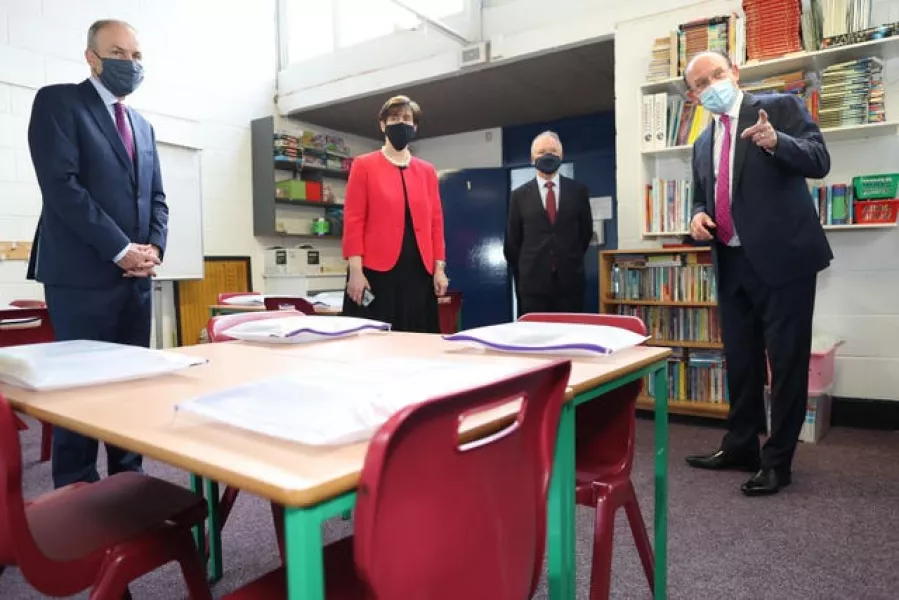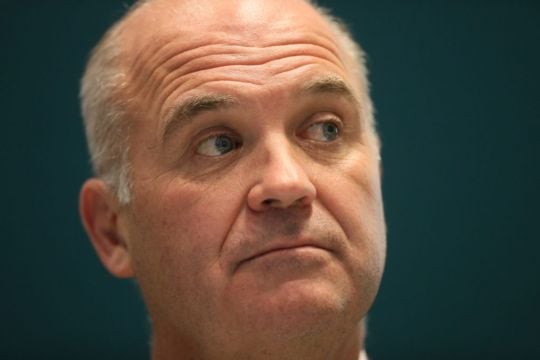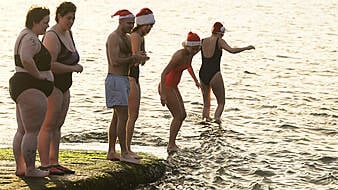Teachers’ unions have expressed concerns about the reopening of schools if safety measures around Covid-19 are not improved.
But Chief Medical Officer Dr Tony Holohan said that based on current evidence, it is not envisioned that schools should not reopen as planned.
He said: “In terms of the data we’re looking at, we do not anticipate that we’ll be in a situation where we’ll be going back to advise the minister to advise Government that on public health grounds, we wouldn’t see at this moment in time that schools shouldn’t reopen as planned.”
A National Public Health Emergency Team (Nphet) briefing this evening heard that the positivity rate in primary schools is 2.7 per cent and is 2.1 per cent in post-primary – well below the community transmission rate of 10 per cent.
Dr Heather Burns said part of the reason why the rate was higher in primary schools was because of the difficulty in implementing social distancing and other public health guidelines in those settings.
She said: “I suppose there is nuance in the data there, in terms of the ability to operationalise the public health guidance.
“In younger age groups, that can be more difficult, and in children with special educational needs, obviously it’s more difficult to implement pod systems and physical distancing.

“That can also be the case at primary level. So with younger primary aged children, it can be more difficult to adhere to pod systems.
“But I think the most important overall message is how much lower it is than the positivity rate among close contacts out in the general community setting, which stands at about 10 per cent.
“All the data we have to date back up the international position that schools are not high-risk environments for Covid-19.”
On the concerns raised by teachers’ unions, Dr Siobhán Ní Bhriain said supports are available for schools if they need them.
She said: “If there’s any concern about an outbreak in a school, there are public health teams that come out nationally to deal with every single school.
“We accept that every single school can be different. Those supports are there for public health.”
Dr Holohan said that while there has been a drop in the number of cases from more than 1,000 a day, Ireland is “definitely not” in a position to say it has turned a corner in the fight against the disease.
But he said he was “confident” that if people adhere to Level 5 restrictions, then there will be a “significant suppression” of the virus over the coming weeks.
“We just hope it will be as much as we need,” Dr Holohan added.
However, he ruled out a relaxation of the public health advice in order to allow children to participate in Halloween activities at the weekend.
Dr Holohan said: “The impact of all of that on Halloween is going to be significant in terms of the way that children like to celebrate these kinds of events.
“I don’t think, unfortunately, that the disease transmission levels now are at a level where we can start saying we’re going to start setting aside some of that advice and guidance, notwithstanding the fact that it’s Halloween.”
The CMO reiterated his appeal to people who are close contacts of a positive case that they must self-isolate.
Symptoms of #coronavirus include:
❗fever (high temperature - 38 degrees Celsius or above)
❗cough - this can be any kind of cough, not just dry
❗loss or change to your sense of smell or taste
❗shortness of breath or breathing difficulties
Learn more: https://t.co/tXii1Z6kKt pic.twitter.com/VhsRDMBSdq— HSE Ireland (@HSELive) October 27, 2020
He said: “It is the most important thing, particularly so now for people who have cases, or might have symptoms of Covid, or are awaiting tests, and might have contacts, especially those who live in houses with people who are confirmed cases – they must self-isolate in their own rooms.
“They must restrict their movements, stay at home, if they’re contacts.”
As of Tuesday at 2pm, there were 341 Covid-19 patients in hospital, of which 38 are in ICUs. There were 29 additional hospital admissions in the last 24 hours.
Of the additional cases, 228 were in Dublin, 130 in Cork, 47 in Galway, 31 in Meath, 27 in Limerick and the remaining 257 cases are spread across another 20 counties.
Almost two thirds, 65 per cent, of the additional cases were in people under 45 years of age and the median age is 32.







